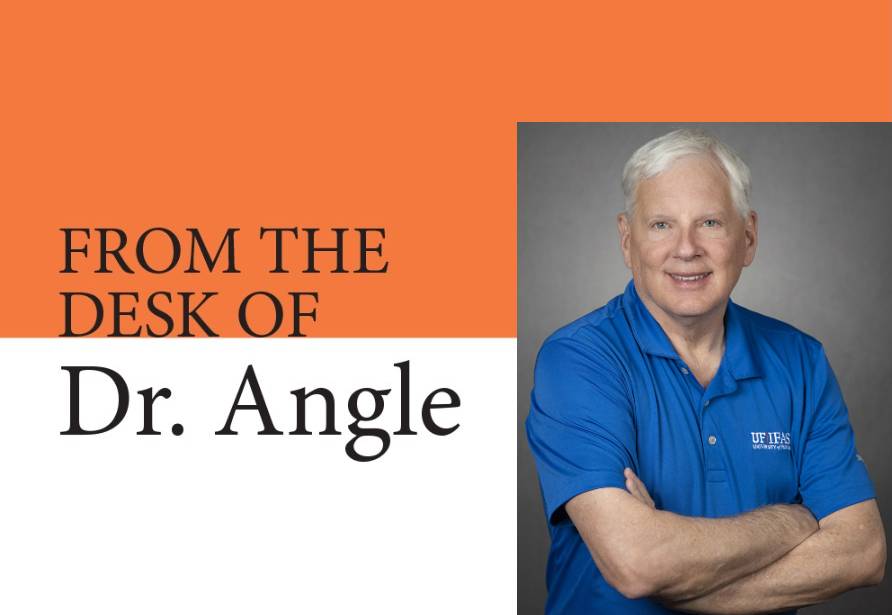There’s a future for Florida citrus because of people like Steven Callaham. He serves Florida agriculture, he sells a vision, and he relies on good solid science to innovate his way through the HLB crisis.
That last part is where UF/IFAS comes in. Arnold Schumann of the UF/IFAS Citrus Research and Education Center has done pioneering research into Citrus Under Protective Screen, or CUPS, and Callaham has run with it.
Last year, I visited Callaham in Bartow to see the future of grapefruit in what looks like a cluster of big-top circus tents. It’s the first Florida citrus grove I’ve visited where no one has ever spotted a psyllid. I was one of many pilgrims who visited the Dundee Citrus Growers Association’s field of screens.
Callaham, who’s the CEO of Dundee Citrus Growers Association, and Jennifer Schaal, the CFO, greeted me at their 300-plus screened-in acres. And they told me UF/IFAS science was essential to their success.
CUPS keeps out psyllids, but the upfront investment is substantial. That means pitching to growers and investors. He tells them Dundee’s methods are validated by UF/IFAS science, and that he has the UF/IFAS scientist he calls the “godfather” of CUPS, Schumann, on speed dial.
Callaham leaned on Schumann as he put his first trees in the ground in 2018. How much should he space them? What fertilization and irrigation strategies should he employ? Which varieties work best under screen?
Schumann continues to visit Callaham to do leaf tissue analysis and evaluate the overall progress. Schumann also continues to share results from his own CUPS research facility as he collects more data on tree performance. Callaham expects to adopt Schumann’s new artificial-intelligence-driven smartphone app to scout for psyllids.
Successful screens don’t take care of every citrus challenge, so Dundee works with other UF/IFAS scientists: CREC entomologist Lauren Diepenbrock advises on control of the mealybug. Extension agent Chris Oswalt collaborates with Callaham on how to grow citrus in a system that generates its own weather. Mark Ritenour, a horticulturist at the UF/IFAS Indian River Research and Education Center, evaluates how CUPS affects fruit color development.
That scientific support not only gives Callaham the confidence to pitch to investors, it gives him confidence to expand. He and Schaal are currently developing 500 acres under screen in Fort Meade as they evaluate the next project.
Callaham and Schaal have become faces of innovation in Florida agriculture. I attended the Florida Fruit & Vegetable Association annual convention in September where Callaham was elected by his peers to serve as vice chair of the FFVA board, which means in two years he’ll be chairman. And Schaal was elected to join the board as one of its youngest members.
When I visited him in Bartow, Callaham told me the Dundee success story could not have happened without UF/IFAS. As leader of the research and innovation arm of Florida agriculture, this is music to my ears—science shows the way and encourages innovation to overcome challenges like HLB.
But Callaham, Schaal, and their growers and investors took the big risk. It still hasn’t paid off, because the oldest trees are only three and a half years old. But when Callaham leads you inside the big-top tent and you see the healthy trees, you believe.
Callaham and Schaal could not have built what they’ve built with Dundee CGA without taking a leap of faith. But that leap is also grounded in science, and your land-grant university is there to provide the foundation to help you stick the landing.
J. Scott Angle is the University of Florida’s Senior Vice President for Agriculture and Natural Resources and leader of the UF Institute of Food and Agricultural Sciences (UF/IFAS).

